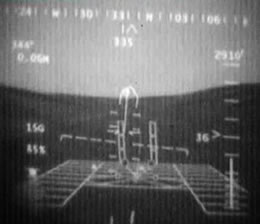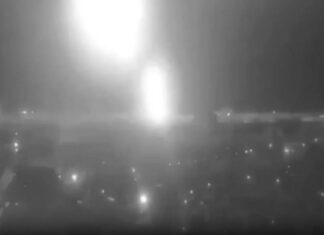
The British Ministry of defence (MOD) Defence Science and Technology Laboratory (Dstl), in conjunction with industry partners, today showcased the development of world leading technology designed to help helicopter pilots land more safely and efficiently in Afghanistan.

A Low Visibility Landing (LVL) system developed by Scientists from the British Defence Science and Technology Laboratory (Dstl), could offer a solution for ‘helicopter brownout’ a situation that occurs when a pilot loses visual references due to dust or sand re-circulating during take-off or landing. Brownout poses a major safety concern and problem when operating helicopters in desert conditions.
“Brownout is a dangerous problem faced daily by UK helicopter crews in Afghanistan,” said Major John Peters of Army Air Corps, lead test pilot for the LVL programme, “when you come in to land the amount of dust blown up can completely obscure all visual references. This makes landing more difficult and dangerous and increases the risk of damage. The development of the low visibility landing system will allow helicopter crews to land much more safely in these conditions, giving them references when they would otherwise be blind.”
A large-scale dust chamber utilizing an inflatable hangar was erected at DSTL’s at Porton Down facility to assess various sensor’s performance in dust conditions, and how reliable these sensors could be in advising aircrew of unseen obstructions. Typical landing site obstructions were put inside the chamber and it was filled with known concentrations of commercially-sourced dust specifically chosen for its similar characteristics to Afghan soil.

The solution proposed by the development team uses a small helmet-mounted display to provide a virtual 3D representation of the landing zone that stays fixed to the earth as the pilot approaches. Ferranti Technologies, an Elbit-Systems subsidiary, provided the display system, based on an operationally proven display, which proved to be the most promising short-term solution to address the specific problem in Afghanistan. The displays’ uses symbology designed to augment the real world picture but also to provide flight critical information in a clear format allowing the crew to assess the height, speed and drift during the final landing approach. When the real-world cues are obscured by the dust they are seemlesly replaced with the system’s cues. The display can be fitted to night vision goggles, supporting day and night operations.
The team developed the system and tested the concept over a six months period, in simulator trials, using front-line Merlin helicopter crews to refine the solution and conduct a large number of helicopter take-offs and landings to show that the system did indeed make these safer. The system was recently demonstrated in successful flight trials on a Lynx helicopter demonstrating effective 3D conformal symbology. Follow-on development is nearing completion and subject to normal approval procedures the production system is expected to be deployed to front-line helicopters in Afghanistan. Research continues into ways to allow pilots to operate more safely and effectively in low visibility conditions; civil applications could include the emergency and rescue services operating in adverse weather such as fog and mist.
The industry/MOD team comprised members of Dstl, the helicopter manufacturer Agusta Westland of the Finmeccannica group and Ferranti Technologies, a subsidiary of Elbit Systems.



















